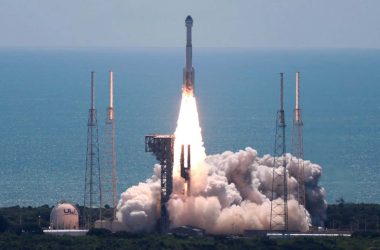Data Section:
Supernova 1987A, as seen by the James Webb Space Telescope
NASA, ESA, CSA, and M. Matsuura (Cardiff University)/A. Pagan (STScI)
One of the universe’s most iconic supernovae, known as SN 1987A, has been observed by the James Webb Space Telescope (JWST). The telescope has provided a detailed view of the supernova’s structure, revealing new insights into its evolution.
SN 1987A is located in the Large Magellanic Cloud, about 168,000 light years away from Earth. It was first discovered in 1987 and has since become a popular target for astronomers to study.
The JWST has allowed scientists to examine SN 1987A in greater detail than ever before. By using infrared light, the telescope captured an image that shows the dense clumps of gas and dust expelled by the explosion in blue, as well as a previously unseen crescent-shaped structure in red. This crescent is likely made up of hydrogen gas and is believed to be an outer layer ejected from the supernova.
Surrounding the blue area and the crescent is a ring of matter that was expelled by the original star in the thousands of years leading up to the supernova. The bright spots on the ring represent collisions between the matter in the ring and the shockwaves from the explosion.
The neutron star that typically forms after a supernova explosion in SN 1987A has not been detected yet. It is believed that the dense gas in the center of the system may be obscuring the light from the neutron star.
These images captured by the JWST are some of the most detailed ever taken of a supernova. The researchers, led by Mikako Matsuura from Cardiff University, plan to continue monitoring SN 1987A with the telescope to further understand the evolution of supernovae.
Topics:
- James Webb space telescope/
- supernovae












